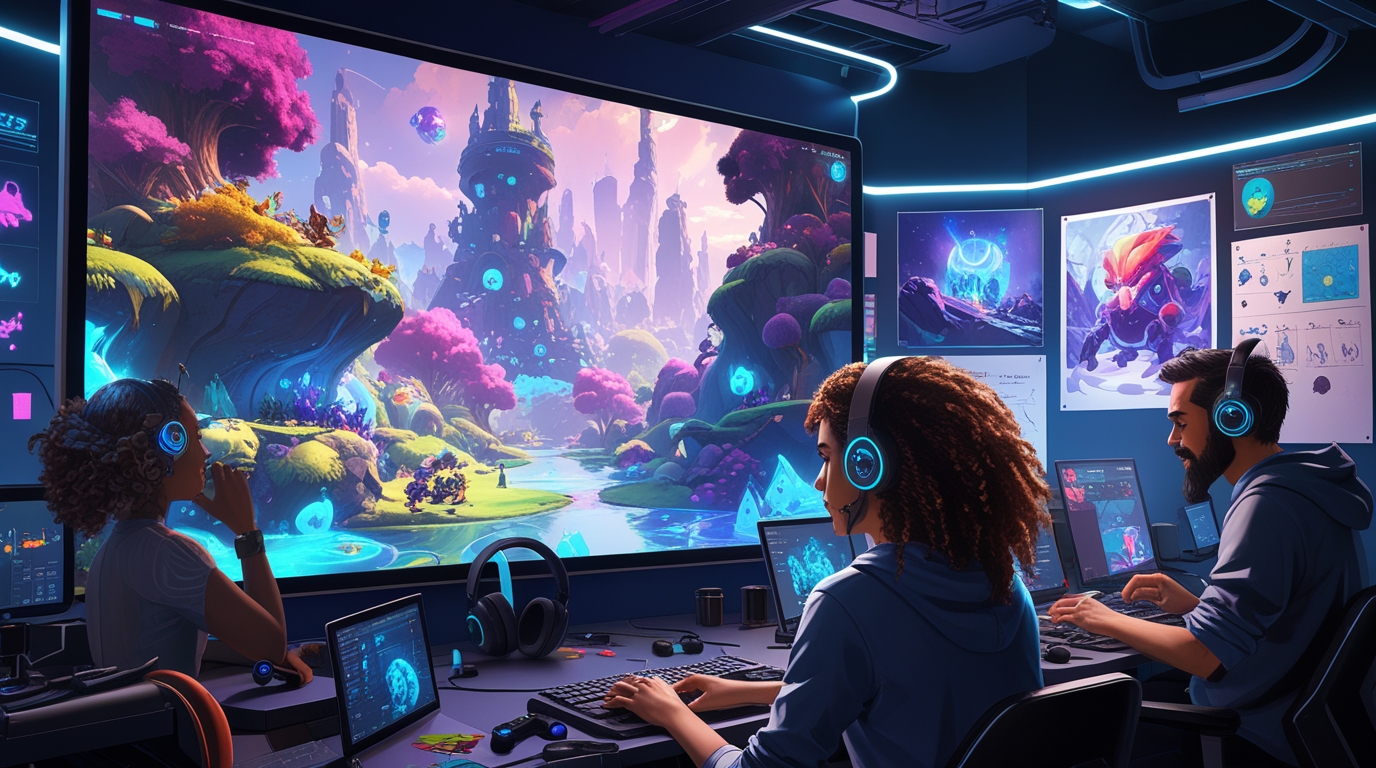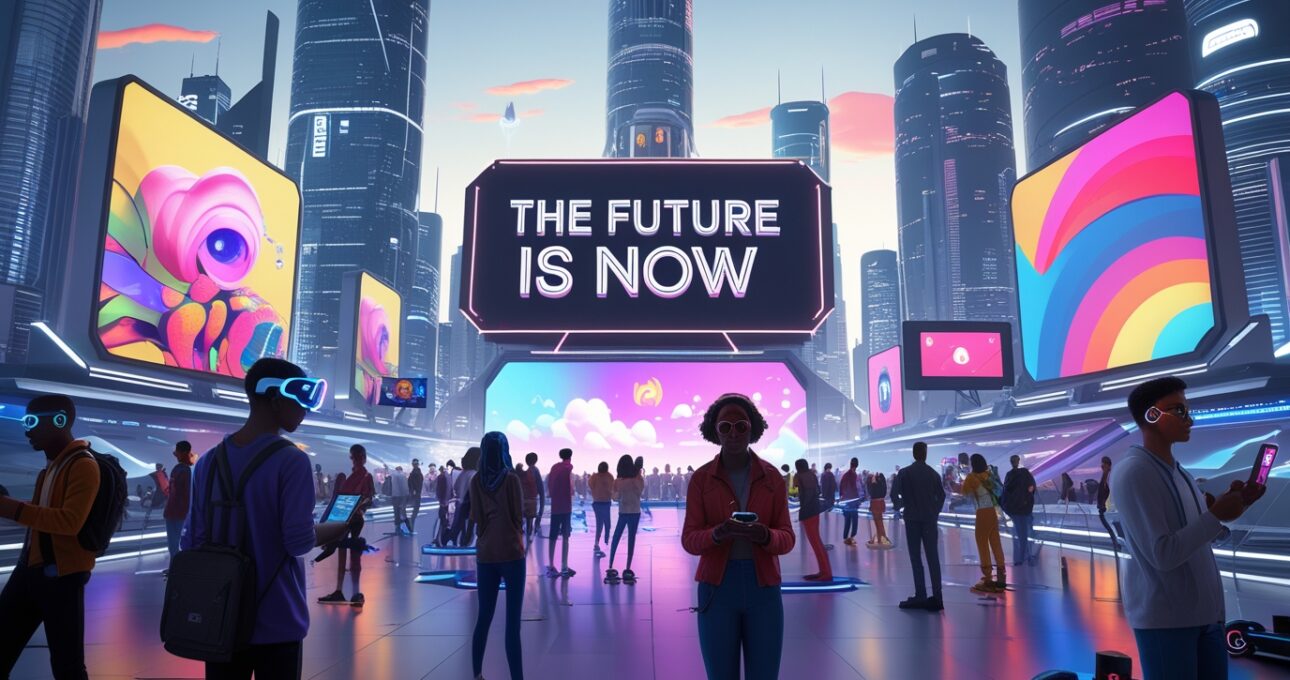Introduction
The creative media industry is experiencing its biggest shift in decades. What was once limited to film studios and ad agencies is now accessible to anyone with imagination and the right tools. In 2025, fields like animation, VFX, game designing, and graphic designing are merging with artificial intelligence, immersive reality, and real-time rendering to create experiences that are more interactive and emotionally resonant than ever before.
From Netflix shows animated using AI-assisted workflows to indie game creators using Unreal Engine for cinematic storytelling, creativity and technology are now inseparable. This means today’s learners, artists, and professionals must understand both — the art and the tech — to truly thrive.
Let’s dive into the biggest trends shaping the creative world and see what every aspiring artist or student should know to stay future-ready.
Animation: The Rise of Hybrid Storytelling
The world of animation is evolving beyond imagination. Gone are the days when animators had to choose between 2D or 3D. The future is a hybrid blend of both, powered by AI and real-time engines.
2D + 3D Fusion: Major studios are now blending hand-drawn 2D aesthetics with 3D depth and lighting. Films like Spider-Man: Across the Spider-Verse and The Bad Guys are prime examples of this “stylized realism.” In 2025, audiences are demanding personality over perfection — they want stories that feel unique.
AI-Assisted Animation: Artificial intelligence is revolutionizing production. Tools like DeepMotion and Runway are automating time-consuming tasks like in-betweening, rigging, and lip-syncing. Instead of replacing animators, AI is becoming their creative co-pilot.
Real-Time Animation: With Unreal Engine and Unity, animators can now visualize and render scenes in real time. This is reducing production costs and making animation more accessible to indie creators.
VFX: From the Big Screen to Every Screen
The VFX (Visual Effects) industry has exploded far beyond movies. What once required multi-million-dollar studios can now be achieved on laptops thanks to real-time rendering and cloud pipelines.
Virtual Production Revolution: One of the biggest shifts in VFX is virtual production. Using LED walls, motion tracking, and real-time engines, filmmakers now shoot scenes that blend live action with 3D environments instantly. Shows like The Mandalorian popularized this, but in 2025, it’s becoming mainstream even for indie projects.
AI in VFX: AI is simplifying labor-intensive processes like rotoscoping, motion capture cleanup, and object tracking. Software like Adobe Firefly and Runway ML is allowing artists to focus on creativity rather than repetitive editing.
VFX Beyond Film: Brands, gaming companies, and even social media creators now use VFX for product commercials, AR filters, and immersive experiences. The lines between marketing, gaming, and cinema are blurring.
Why it matters:
VFX is no longer confined to Hollywood. It’s part of YouTube, short films, Instagram reels, and gaming content. Students entering the VFX field should learn not only compositing and rendering but also how to integrate VFX with animation, graphic design, and game environments.
Game Designing: The Era of Immersive Worlds

Few industries have grown as fast as game designing. With global gaming revenue projected to surpass $200 billion, this field now combines art, psychology, storytelling, and software engineering.
Major Trends in Game Designing:
AI-Driven Gameplay: Modern games are using AI for more dynamic NPCs, adaptive difficulty levels, and procedural world-building. This means players experience unique journeys every time they play.
Cross-Platform & Cloud Gaming: In 2025, the biggest games run seamlessly across mobile, console, and cloud — allowing users to play anywhere. Game designers must now optimize not just visuals, but user experiences across diverse devices.
AR & VR Integration: Immersive gaming is here to stay. AR and VR titles are no longer niche; they’re becoming part of mainstream entertainment. Titles that combine physical movement with digital worlds are creating powerful experiences that blur reality.
Storytelling Meets Design: Modern players expect cinematic storytelling. Game designers are increasingly collaborating with animators, VFX artists, and graphic designers to create emotional impact through visual design.
Why it matters:
The best game designers are storytellers at heart. Whether designing levels, characters, or environments, they need to blend artistic vision with interactivity. Students should focus on narrative design, user experience, and visual style — not just coding.
Graphic Designing: Visual Communication in Motion
While graphic designing has been around for decades, its role has evolved dramatically. Designers are now expected to think in motion and interaction, not just print and layout.
Emerging Trends in Graphic Design:
Motion Graphics & Animation Integration: With platforms like Instagram, YouTube Shorts, and TikTok dominating attention, static visuals aren’t enough. Motion typography, animated logos, and micro-interactions are now part of every designer’s toolkit.
3D & AR-Driven Design: Software like Blender and Adobe Dimension are empowering designers to create realistic 3D compositions. AR-based packaging, virtual product previews, and interactive ads are reshaping marketing visuals.
AI-Assisted Creativity: Tools like Adobe Firefly, Canva Magic Studio, and Midjourney are helping designers generate ideas and concepts faster — turning rough prompts into polished visuals in seconds.
Why it matters:
Graphic design is no longer about creating posters — it’s about building visual ecosystems. Today’s designers collaborate with VFX artists, animators, and game designers to ensure brand stories flow consistently across platforms.
The Power of Collaboration Across Creative Fields
In 2025, the future belongs to multidisciplinary creators. The boundaries between animation, VFX, game designing, and graphic designing are fading fast.
For example:
A game designer now needs an understanding of VFX and animation to create immersive environments.
A graphic designer may collaborate with animators to design motion-based branding.
A VFX artist may use game engines like Unreal to produce cinematic shots in real time.
Studios today seek professionals who can adapt — who understand not just their craft, but how it fits into the wider production pipeline.
Skill Sets Every Modern Creator Should Build:
Creative Storytelling: No matter the medium, storytelling remains central.
Technical Fluency: Learn industry software — Maya, Blender, Unreal Engine, After Effects, Photoshop, and more.
AI Literacy: Understand how to use AI tools for ideation, rendering, and design automation.
Portfolio Development: Build projects that demonstrate versatility — a short animated clip, a game concept, a VFX shot, and a motion-graphic campaign.
Networking & Collaboration: Connect with peers from all creative disciplines. Great things happen when artists collaborate.
Why 2025 Is the Best Time to Learn These Skills
The global demand for skilled professionals in animation, VFX, game designing, and graphic designing has never been higher.
Studios are expanding: OTT platforms, ad agencies, gaming studios, and streaming companies are hiring at record rates.
Technology is democratizing creation: Real-time rendering, AI, and cloud tools have made high-quality creation possible on modest setups.
India is rising as a creative hub: Cities like Bangalore are becoming hotspots for creative media, offering exposure, internships, and global opportunities.
For students, this means now is the time to start. Whether your passion lies in storytelling, character design, world-building, or branding, the creative industry needs your imagination.
Conclusion: The Future of Creativity Is Collaborative
The future of creative media is not about competition between fields — it’s about collaboration. The best creators of tomorrow will be those who can merge animation, VFX, game designing, and graphic designing into seamless experiences.
As industries shift toward immersive storytelling and technology-driven workflows, professionals who stay adaptable and continuously upskill will lead the charge.
So whether you’re a student exploring your options or a professional looking to evolve — step into the future of creativity with an open mind, a curious heart, and a willingness to learn beyond your discipline.
Because in 2025 and beyond, creativity isn’t just an art — it’s an evolving language.

